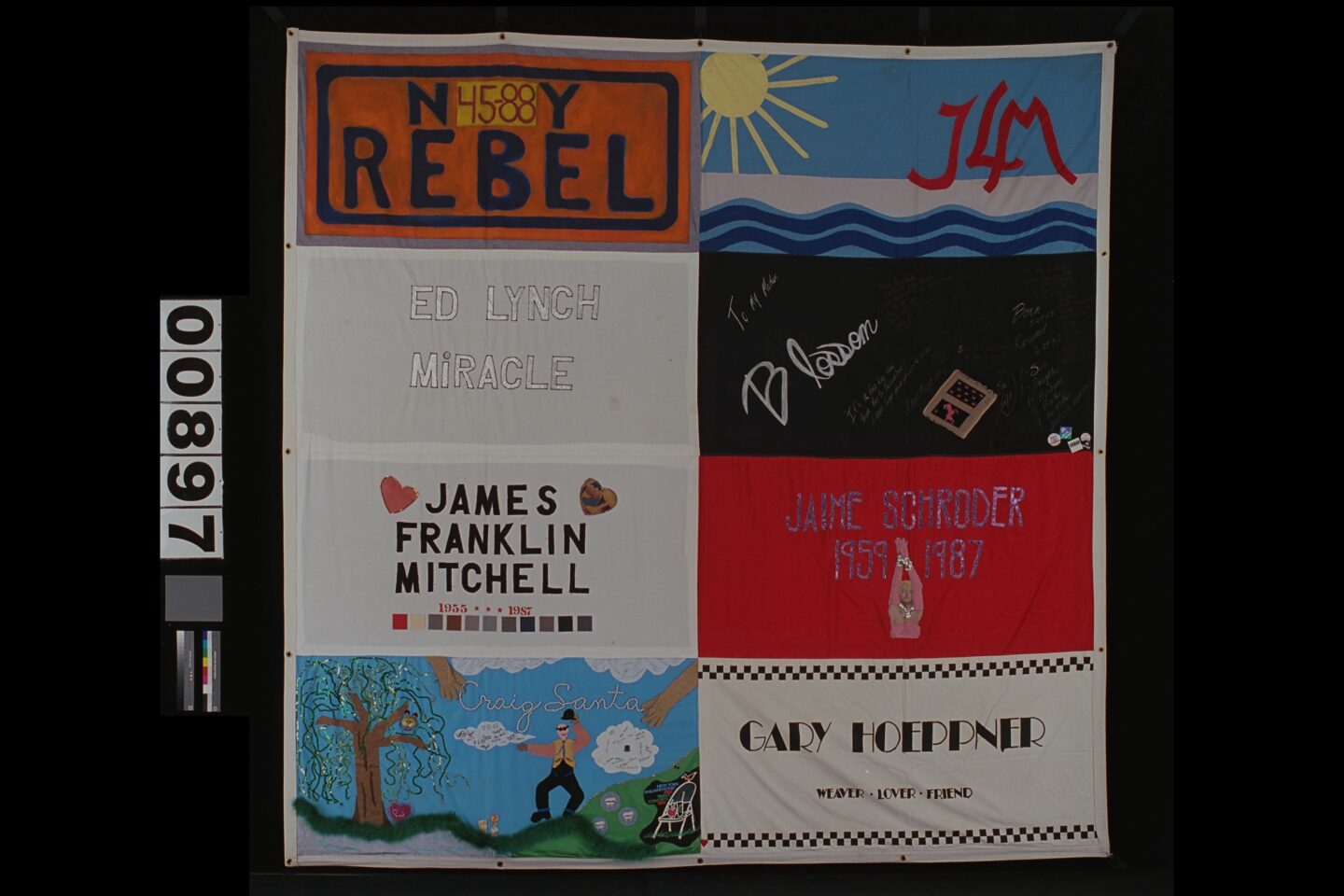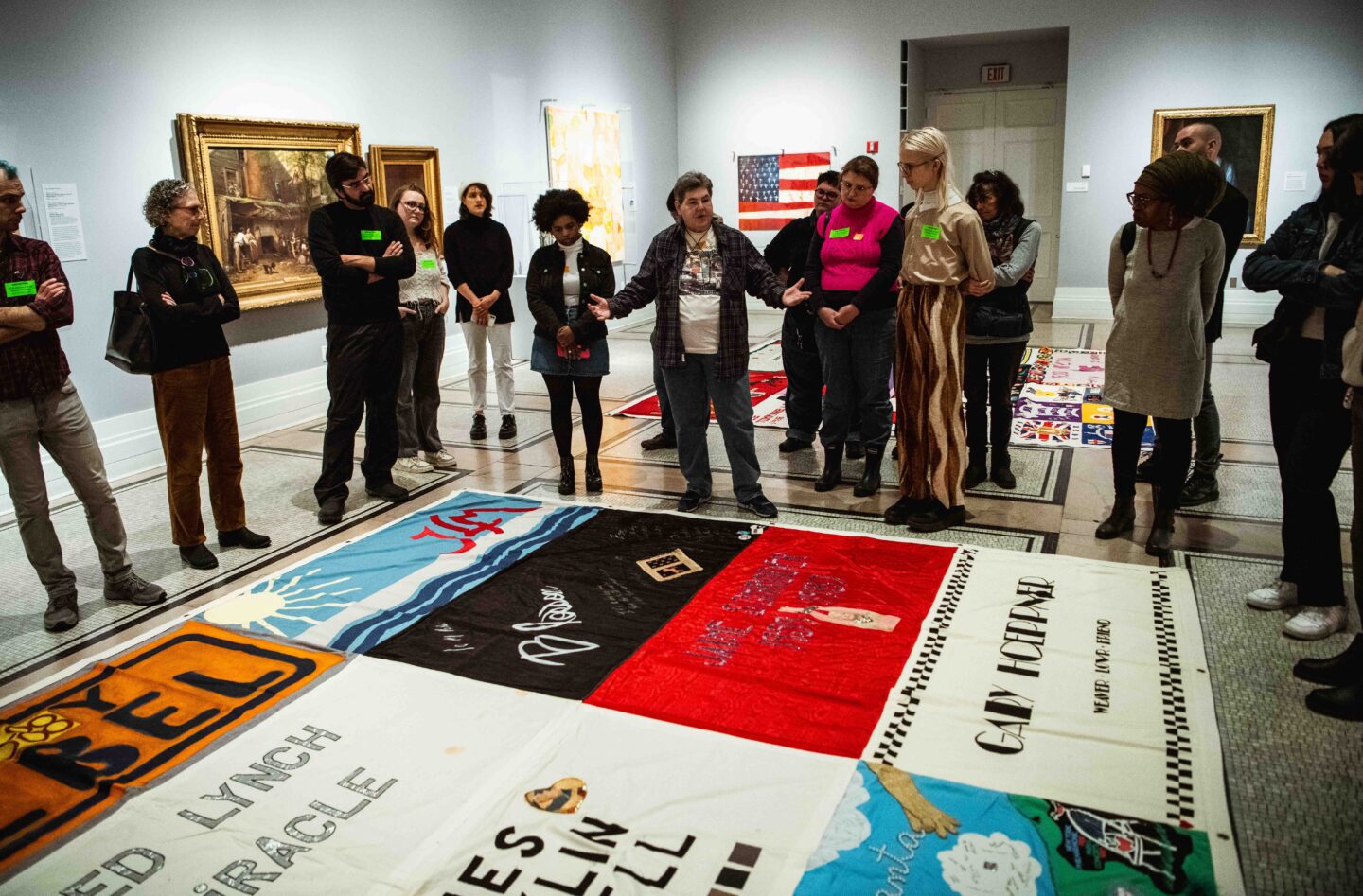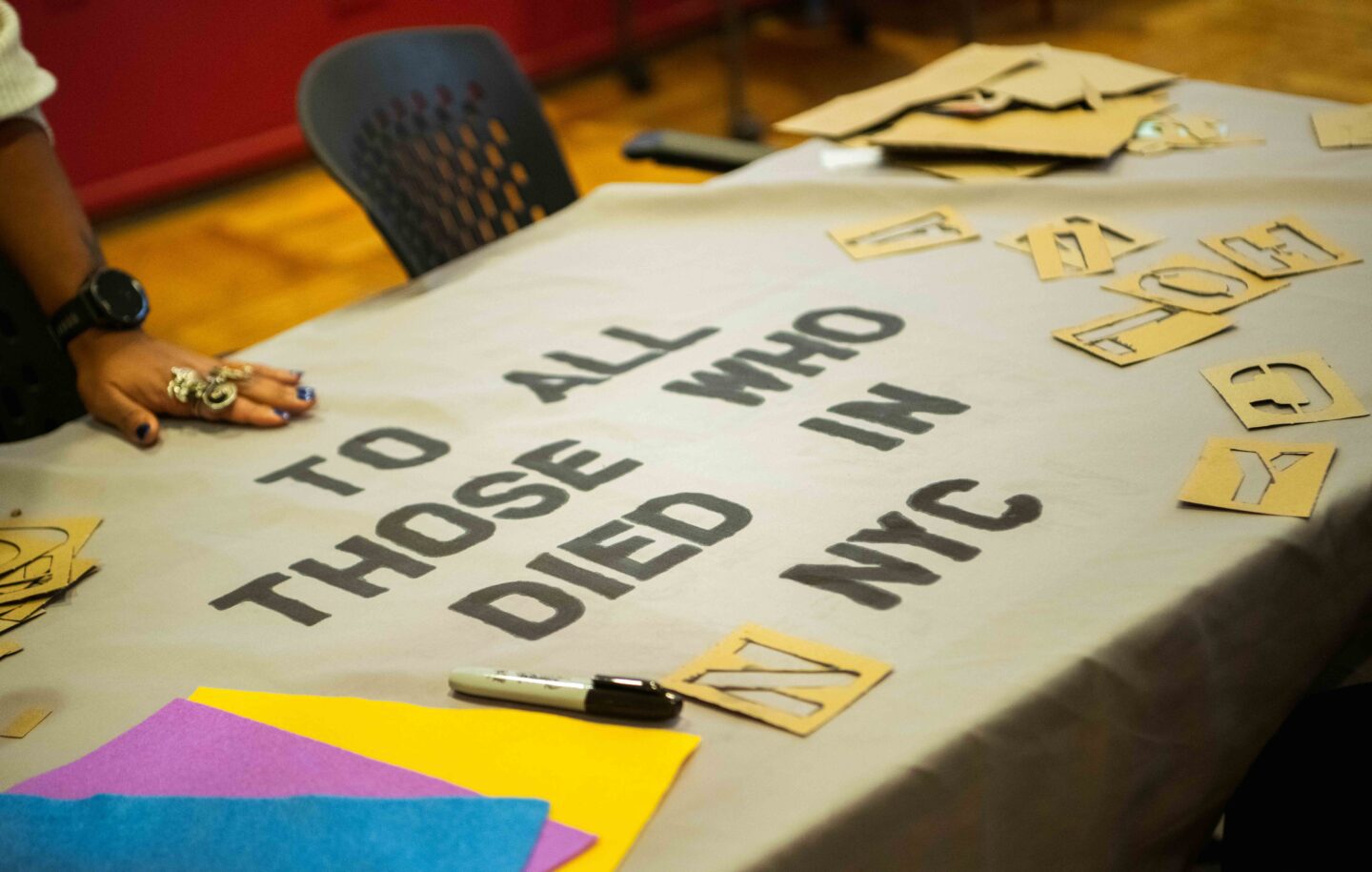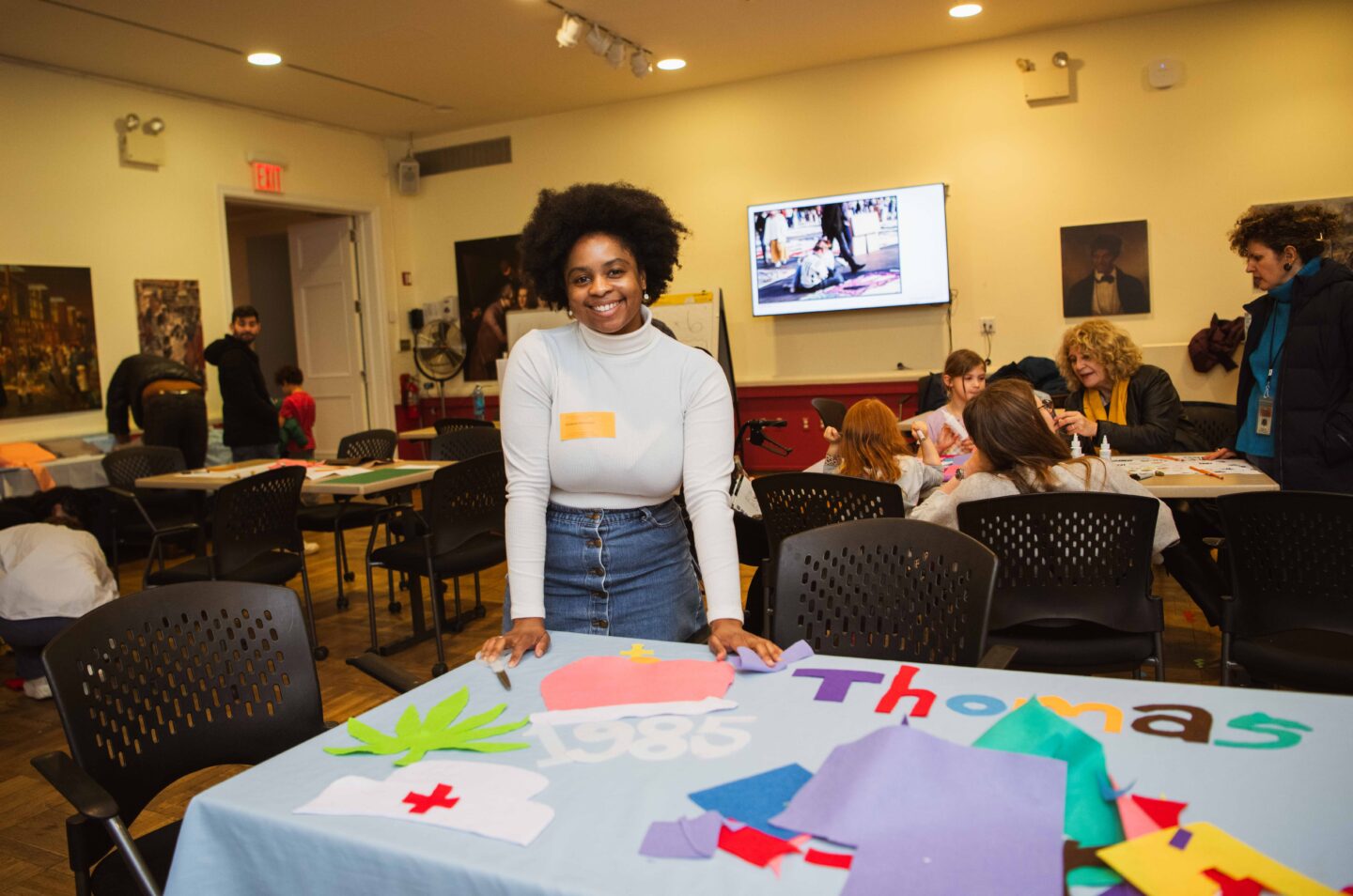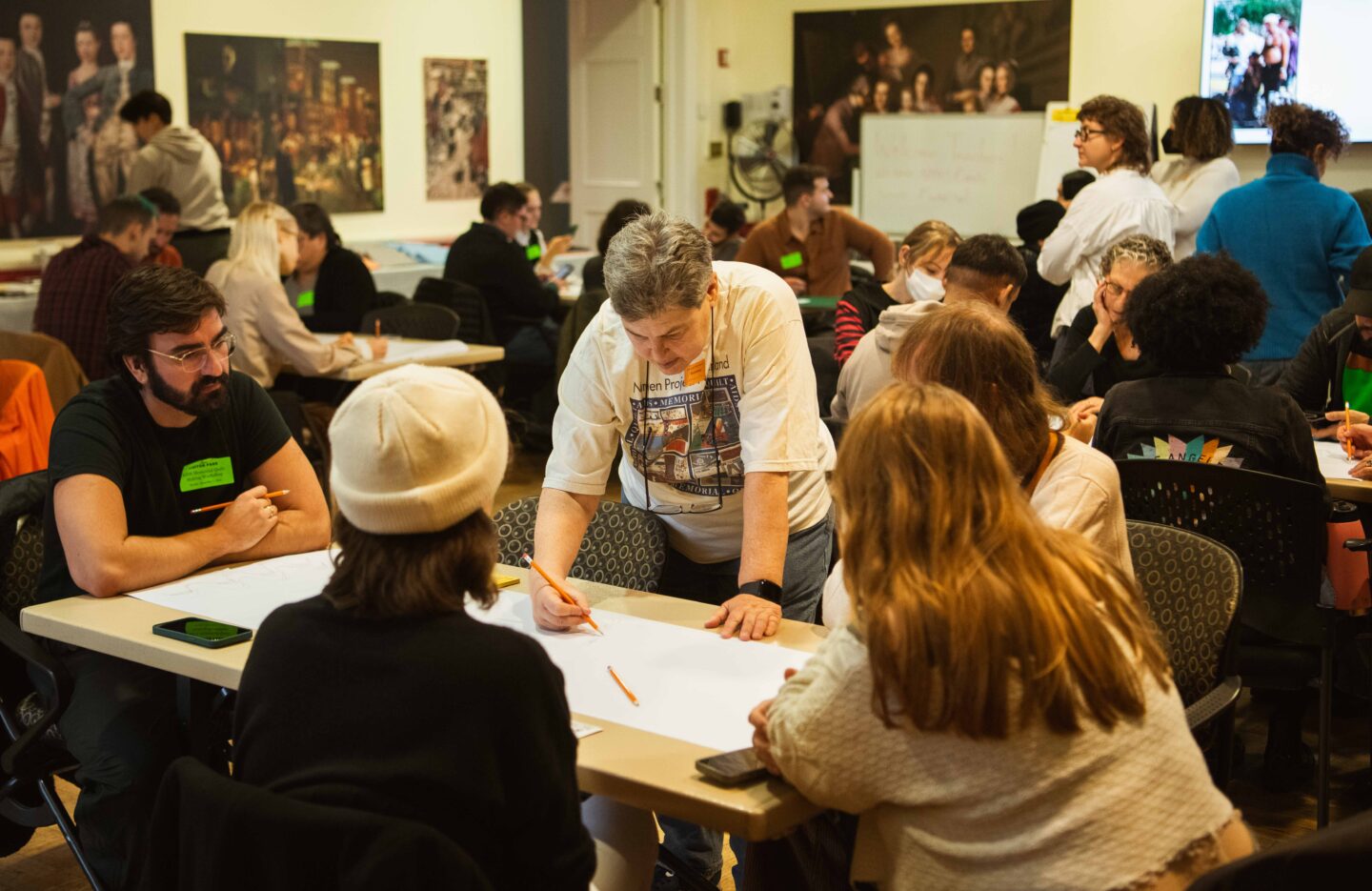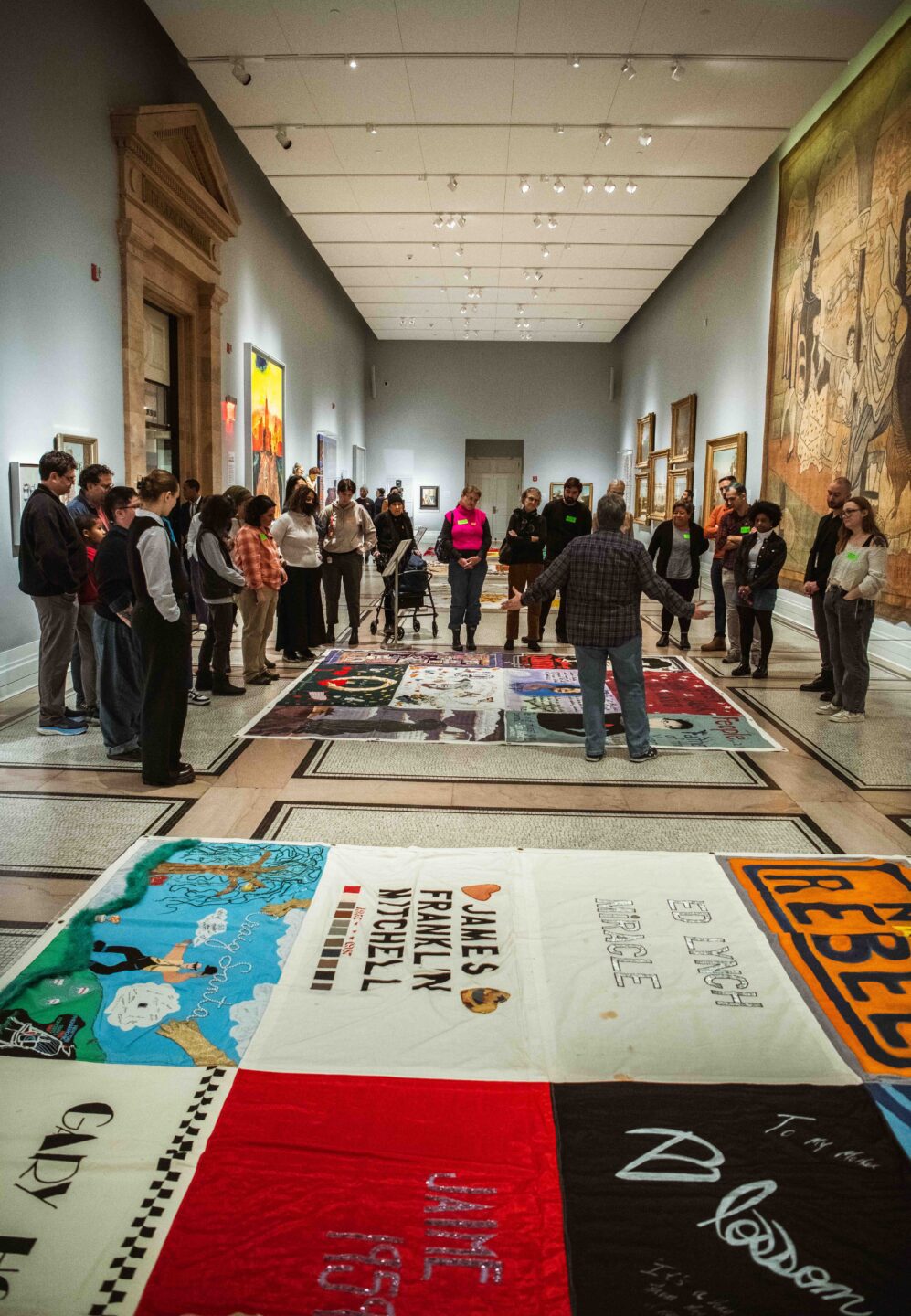AIDS Memorial Quilt‑making Workshop with Pat Morgan
This event has passed
In-person at New-York Historical Society (170 Central Park West, New York, NY 10024). Photos courtesy of National AIDS Memorial.
Event Details
Join the American LGBTQ+ Museum and the New-York Historical Society for a Memorial Quilt-making Workshop. This event is organized in conjunction with NYHS’s three-day display (Dec. 1-3) of six diverse panels from the AIDS Memorial Quilt, including a 1988 panel made by activist Pat Morgan, who will be leading the workshop and offering a personal narrative.
First conceived in November 1985 by activist Cleve Jones, the NAMES Project AIDS Memorial Quilt commemorates the thousands of lives lost to the ongoing AIDS pandemic. In November 2019, the National AIDS Memorial became the permanent caretaker and steward of the Quilt. Both a memorial and a call to action, the Quilt is considered the largest community arts project in history.
World AIDS Day Quilt Display is part of the National AIDS Memorial’s efforts to bring the Quilt to communities across the United States to raise greater awareness and education about HIV/AIDS and to remember those lost to the pandemic.
Check-in will open at 1:30p and we will begin with a viewing of the AIDS Quilt display promptly at 2:00p.
*All materials will be provided, no prior experience with quilt-making is necessary. All ages welcome!*
To learn more about what to expect, read these panel guidelines on the National AIDS Memorial website.
Photos courtesy of National AIDS Memorial
Reflection by Pat Morgan
Time has this awful way of degrading our memories. What was clear in our mind years ago is not so clear decades later. Details have this horrid way of going by the wayside as newer memories are made. What was once at the top of the list through time goes lower down the list in order of importance. Though when an important memory comes to the surface, we can be given the opportunity to remember the details once again. Even twenty five years later, those memories can return. Rather than being in full color, they can be in sepia tones of years past. Rather than bright and shiny, they show their age. Yet, those moments will remain alive as long as time is a gentle friend. The best memories are those recorded in visuals.
Through a haze with faded words written on a black cotton cloth in metallic markers I was given the chance to once again see the words I wrote on the Quilt panel I made in May of 1988 for my mother Blossom Sprei Morgan who more than likely died of AIDS 1982. She was one of the over 1188 panels made for a display which took place on Pride Saturday in Central Park in 1988.
When the NY Memorial Quilt Workshop first opened they needed sewing supplies. I brought in boxes of supplies that belonged to my mother. Boxes of safety pins, straight pins, bobbins, and 300 spools of thread. There was tailor’s chalk, yardsticks, sewing machine needles, and fabric donated to start the workshop off. By the time the display was ready to begin, each panel that entered that workshop had been touched by one of her sewing supplies.
Through a chance meeting during Brooklyn Pride in June 2023, a conversation with the American LGBTQ+ Museum Executive Director, Ben Garcia who was staffing the booth for the Museum, a conversation between us took place. He mentioned that the Museum’s partners, the New-York Historical Society, were hosting 6 panels from NAMES Project’s AIDS Memorial Quilt, now part of AIDS Memorial in San Francisco, during World AIDS Day. I told him the story of my mom and he kept that memory into the fall when he called to tell me that I would get to see her panel once again. My heart skipped many beats from his gracious gesture.
Last weekend, on Friday Dec 1st, I finally had a chance to see my mother’s panel for the first time in 25 years. Slightly faded, somewhat aged, the political buttons on her panel still present. Her needlepoint of Aries the Ram sewn on the panel, placed to show something she created but did not finish as a metaphor for her life cut short at 57 years. The words I wrote in silver and gold have lasted 35 years but are difficult to read in some places. Mom finally got her chance to live for a weekend on Central Park West.
As visitors came to view the Quilt at the New-York Historical Society this weekend, my partner Laura and I volunteered to tell stories of our experiences at the Quilt. Visitor after visitor took the time to read the different panels which were chosen for diversity and to celebrate the different lives lost to AIDS over a period of more than 40 years. A block dedicated to women prisoners with a butterfly alive outside of a jail cell door with a woman hoping that she too can achieve the metamorphosis of freedom before death from AIDS. This was my interpretation.
Panels celebrating women and men of color with lovely painted faces or photo transfers to show you that AIDS has a face. Once upon a time a person lived in the closet as they dare not speak of their AIDS diagnosis to names and faces celebrated in memorial so the memory can last of a life lived but never properly finished. Reflections by the visitors as they whispered to one another concerning the meanings of the panels and the people represented to louder voices talking of memories of people who they knew who had died.
For some visitors, I was able to search for people they knew on the Quilt website, AIDSMemorial.org.. Two individuals found a panel they made on the website. Another person found the name of his best friend. Their eyes welled up after they shared their memory of the people who were lost to AIDS.
On the 3rd day of the display, Sunday, Dec 3rd, a workshop was hosted in partnership with the American LGBTQ+ Museum to help visitors create their own panels to memorialize people lost to AIDS. The experience brought back memories of those days spent in 1988 at the workshop.
Fabric, squares of felt, markers, measuring tape, safety pins and a room filled with panelmakers graced the workshop on this rainy afternoon. Tables were set up where friends and strangers sat together to honor the memory of those who died of AIDS -he modern quilting circle of people creating their panel to be included as part of the AIDS Memorial Quilt.
The ideas flowed to honor a neighbor. To honor friends. To honor family, To honor workers. To honor people in a city. To honor people in a country. To honor someone who never had the chance to be recognized and celebrated.
The quilting circle brought people together to remember, to memorialize, to create a memory through the visual art of panel making.
Our panelmakers took home their work to finish to create their lovely works of art.
As the workshop, which was co-hosted by S.C. “Luci” Lucier, Ksenia M. Soboleva, and Suhaly Bautista-Carolina began to wind down, we joined together to create a signature panel to commemorate the event with each of us signing it. The panelmakers of the first Quilt Workshop of the American LGBTQ Museum and New-York Historical Society also left their words which will be sent to the AIDS Memorial in San Francisco to be a part of the Quilt.
When it was over we all went over to the display for me to say goodbye until next time to my mother’s panel. My partner and I sat together in our rollators as Luci, Ksenia, and Suhaly stood by us. Our wonderful photographer Leandro Justen documented the event in photos as he had also created a panel.
When I left I took one last look through the glass of a locked door. It was a cathartic yet necessary weekend for me. The Quilt was there for me when there was time the world created trauma in my life. I promised that I would give back to the Quilt to say thank you for the healing it has given me. In that last look I said goodbye to my mom’s panel.
The best memories are those recorded in visuals. Those moments of memory will remain alive as long as time is a gentle friend.
Rev Pat Morgan, MSC.
